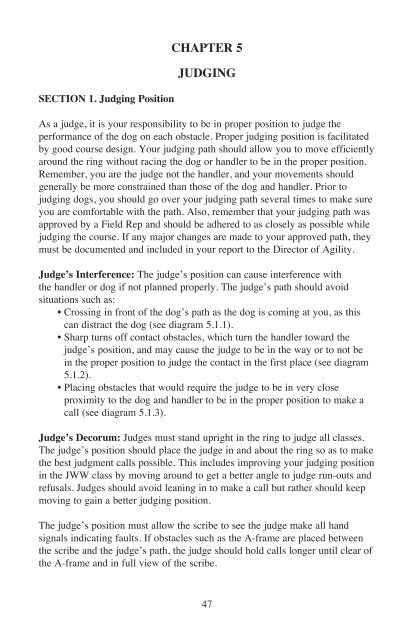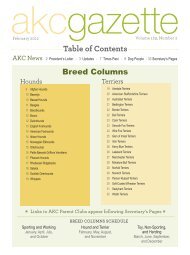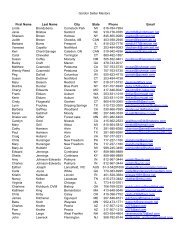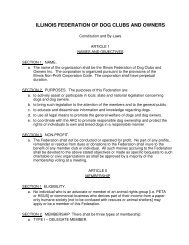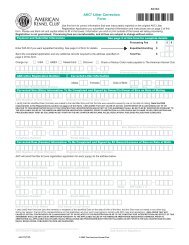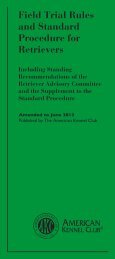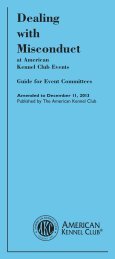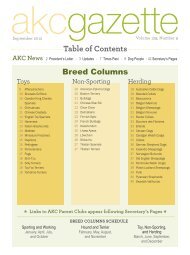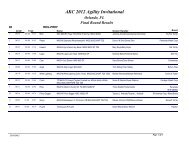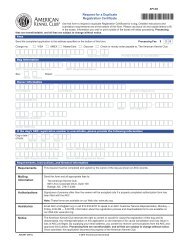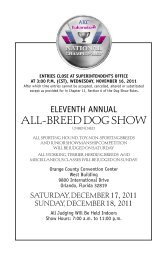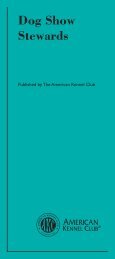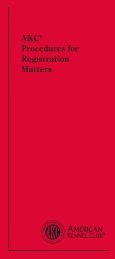You also want an ePaper? Increase the reach of your titles
YUMPU automatically turns print PDFs into web optimized ePapers that Google loves.
Section 1. Judging Position<br />
CHAPTER 5<br />
JUDGING<br />
As a judge, it is your responsibility to be in proper position to judge the<br />
performance of the dog on each obstacle. Proper judging position is facilitated<br />
by good course design. Your judging path should allow you to move efficiently<br />
around the ring without racing the dog or handler to be in the proper position.<br />
Remember, you are the judge not the handler, and your movements should<br />
generally be more constrained than those of the dog and handler. Prior to<br />
judging dogs, you should go over your judging path several times to make sure<br />
you are comfortable with the path. Also, remember that your judging path was<br />
approved by a Field Rep and should be adhered to as closely as possible while<br />
judging the course. If any major changes are made to your approved path, they<br />
must be documented and included in your report to the Director of <strong>Agility</strong>.<br />
Judge’s Interference: The judge’s position can cause interference with<br />
the handler or dog if not planned properly. The judge’s path should avoid<br />
situations such as:<br />
• Crossing in front of the dog’s path as the dog is coming at you, as this<br />
can distract the dog (see diagram 5.1.1).<br />
• Sharp turns off contact obstacles, which turn the handler toward the<br />
judge’s position, and may cause the judge to be in the way or to not be<br />
in the proper position to judge the contact in the first place (see diagram<br />
5.1.2).<br />
• Placing obstacles that would require the judge to be in very close<br />
proximity to the dog and handler to be in the proper position to make a<br />
call (see diagram 5.1.3).<br />
Judge’s Decorum: <strong>Judges</strong> must stand upright in the ring to judge all classes.<br />
The judge’s position should place the judge in and about the ring so as to make<br />
the best judgment calls possible. This includes improving your judging position<br />
in the JWW class by moving around to get a better angle to judge run-outs and<br />
refusals. <strong>Judges</strong> should avoid leaning in to make a call but rather should keep<br />
moving to gain a better judging position.<br />
The judge’s position must allow the scribe to see the judge make all hand<br />
signals indicating faults. If obstacles such as the A-frame are placed between<br />
the scribe and the judge’s path, the judge should hold calls longer until clear of<br />
the A-frame and in full view of the scribe.<br />
47


